| Srl | Item |
| 1 |
ID:
162573
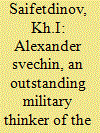

|
|
|
|
|
| Summary/Abstract |
The paper gives a concise biography and covers major stages in the life of the great military scholar, as well as the more important points from his basic works, which are still topical today.
|
|
|
|
|
|
|
|
|
|
|
|
|
|
|
|
| 2 |
ID:
004726
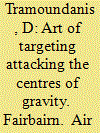

|
|
|
|
|
| Publication |
Fairbairn, Air Power Studies Centre, 1994.
|
| Description |
25p.
|
| Series |
Air Power Studies Centre Paper;22
|
| Standard Number |
0642202273
|
|
|
|
|
|
|
|
|
|
|
|
Copies: C:1/I:0,R:0,Q:0
Circulation
| Accession# | Call# | Current Location | Status | Policy | Location |
| 035656 | 355.422/TRA 035656 | Main | On Shelf | General | |
|
|
|
|
| 3 |
ID:
005265
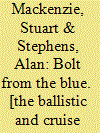

|
|
|
|
|
| Publication |
Fairbairn, Air Power Studies Centre, 1994.
|
| Description |
23p.
|
| Series |
Air Power Studies Centre; 20
|
| Standard Number |
0642199183
|
|
|
|
|
|
|
|
|
|
|
|
Copies: C:1/I:0,R:0,Q:0
Circulation
| Accession# | Call# | Current Location | Status | Policy | Location |
| 036476 | 358.17/MAC 036476 | Main | On Shelf | General | |
|
|
|
|
| 4 |
ID:
148538
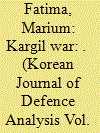

|
|
|
|
|
| Summary/Abstract |
In the winter of 1998-99, the inexplicable presence of Pakistani troops under the pretext of being local freedom fighters in the Indian-administered side of Kashmir brought the region to the brink of a nuclear war. This paper probes the military rationale behind Pakistan`s initiative, organizational interests, internal politicking among different state organs, and the role of a few powerful individuals in the operation. It takes into account the important dimensions of strategy employed during the preparations for the Kargil War and the errors on the part of Pakistani planners which if addressed could have reversed the outcome of the operation. The controversies surrounding the Kargil conflict are discussed through the works of academicians and memoirs of the military commanders from India and Pakistan. The first part of the paper focuses on the rivalry and causes of the outbreak of war between India and Pakistan by explaining the beliefs and psychology of the military planners based on the premise of Cashman and Robinson. The second part reviews the political and nuclear milieu in which the conflict took place, while the third part accounts for the international efforts to prevent the conflict from escalating. The fourth part draws conclusions from the entire episode, indicating the discrepancies on both sides and the evidence that Kargil was unique because it challenged the military logics.
|
|
|
|
|
|
|
|
|
|
|
|
|
|
|
|
| 5 |
ID:
165357
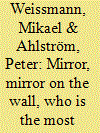

|
|
|
|
|
| Summary/Abstract |
This article explores why the offensive predominates military tactical thinking. With survey results showing an offensive bias among 60 per cent of senior Swedish officers and as many as 80 per cent in the case of the army, it is clear that this is not just a problem of the past but is equally relevant today. The article asks why there is a tendency to perceive and understand offensive tactics as the preferred choice and the way to conduct battle that should be encouraged and preferred. Drawing on existing research and the findings of a pilot study, ten propositions for why the offensive bias exists are tested using a mixed-method approach. Based on the findings, the article develops a model to understand why the offensive dominates military tactical thinking. It is found that the two key constitutive factors behind the offensive bias are military culture and education. These factors most directly and profoundly influence an officer’s identity, perceptions, and thinking. Military culture and education, in turn, work as a prism for four other factors: military history, the theory and principles of war, doctrine and TTPs, and psychological factors.
|
|
|
|
|
|
|
|
|
|
|
|
|
|
|
|
| 6 |
ID:
005257
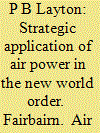

|
|
|
|
|
| Publication |
Fairbairn, Air Power Studies Centre, 1993.
|
| Description |
25p.
|
| Series |
Air Power Studies Centre;9
|
| Standard Number |
0-642-18839-4
|
|
|
|
|
|
|
|
|
|
|
|
Copies: C:1/I:0,R:0,Q:0
Circulation
| Accession# | Call# | Current Location | Status | Policy | Location |
| 036470 | 358.5/LAY 036470 | Main | Withdrawn | General | |
|
|
|
|